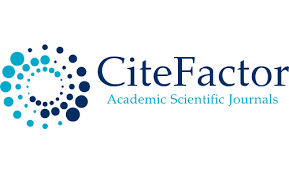Teaching Students Academic Words: Strategies for Success
DOI:
https://doi.org/10.62480/jpip.2024.vol30.pp31-35Keywords:
Academic vocabulary, teaching strategies, direct instruction, contextual learningAbstract
Academic vocabulary is crucial for students' success in school and beyond, yet many learners struggle with mastering these essential words. This article explores effective strategies for teaching academic vocabulary to students of all ages. It begins with an overview of the importance of academic words and the challenges faced by students in acquiring them. The article then delves into various teaching strategies, including direct instruction, contextual learning, active engagement, word consciousness, teaching word parts, and repetition and review. Additionally, it highlights the role of technology in enhancing vocabulary instruction and the importance of assessment and feedback in monitoring students' progress. By implementing these strategies, educators can help students develop a strong academic vocabulary, which is a key component of academic success.
References
Beck, I. L., McKeown, M. G., & Kucan, L. (2013). Bringing words to life: Robust vocabulary instruction (2nd ed.). Guilford Press.
Graves, M. F. (2006). The vocabulary book: Learning and instruction. Teachers College Press.
Harmon, J. M., Wood, K. D., & Kiser, K. (2009). Promoting vocabulary learning with the interactive word wall. Middle School Journal, 40(3), 58-63. https://doi.org/10.1080/00940771.2009.11461777
Henriksen, D. (2013). Vocabulary development and teaching: A case for a lexical approach. In J. I. Liontas (Ed.), The TESOL encyclopedia of English language teaching (pp. 1-7). Wiley-Blackwell. https://doi.org/10.1002/9781118784235.eelt0521
Kieffer, M. J., & Lesaux, N. K. (2012). Knowledge of words, knowledge about words: Dimensions of vocabulary in first and second language learners in sixth grade. Reading and Writing, 25(2), 347-373. https://doi.org/10.1007/s11145-010-9272-9
Downloads
Published
Issue
Section
License

This work is licensed under a Creative Commons Attribution-NonCommercial 4.0 International License.
User Rights
Under the Creative Commons Attribution-NonCommercial 4.0 International (CC-BY-NC), the author (s) and users are free to share (copy, distribute and transmit the contribution).
Rights of Authors
Authors retain the following rights:
1. Copyright and other proprietary rights relating to the article, such as patent rights,
2. the right to use the substance of the article in future works, including lectures and books,
3. the right to reproduce the article for own purposes, provided the copies are not offered for sale,
4. the right to self-archive the article.












